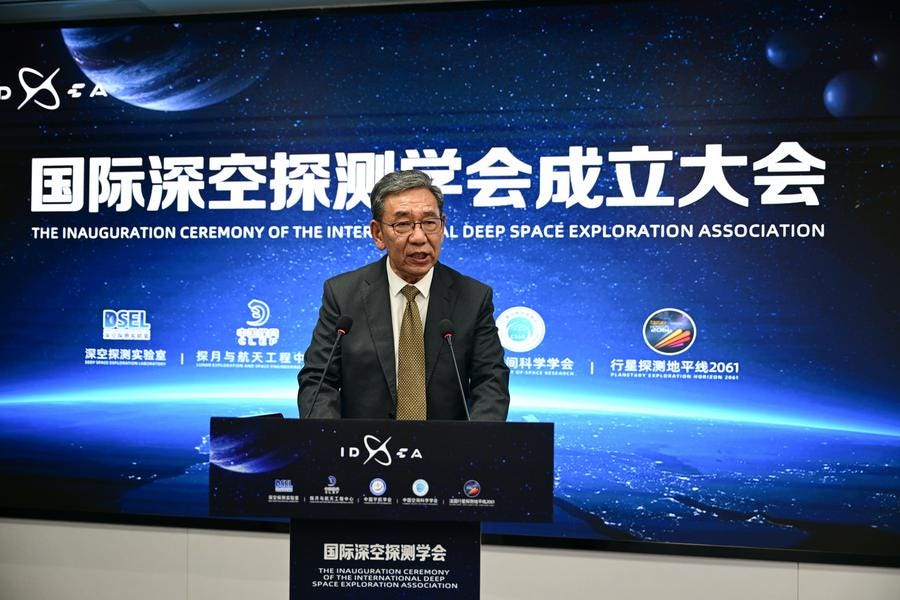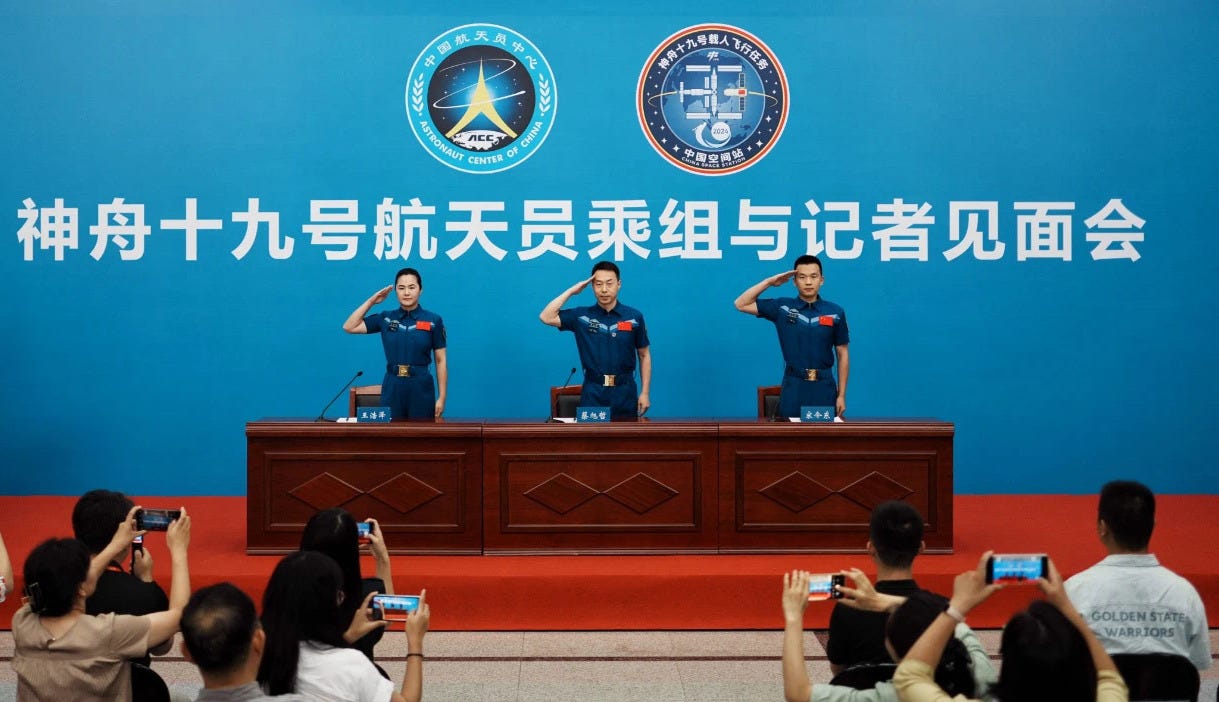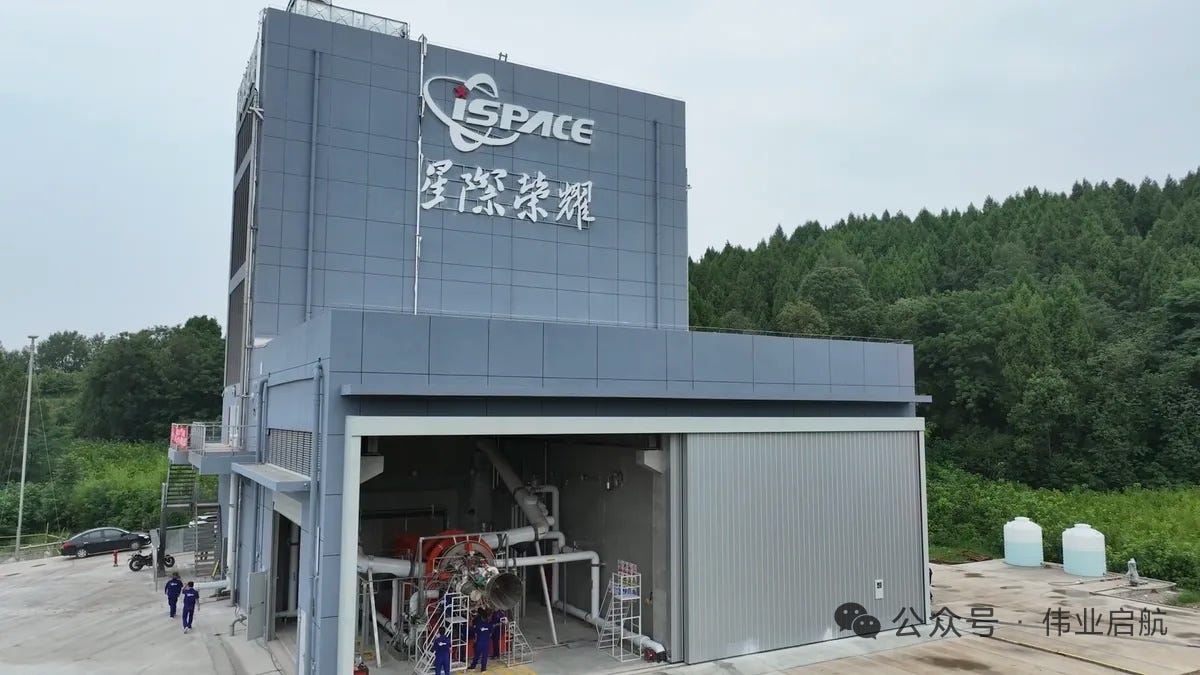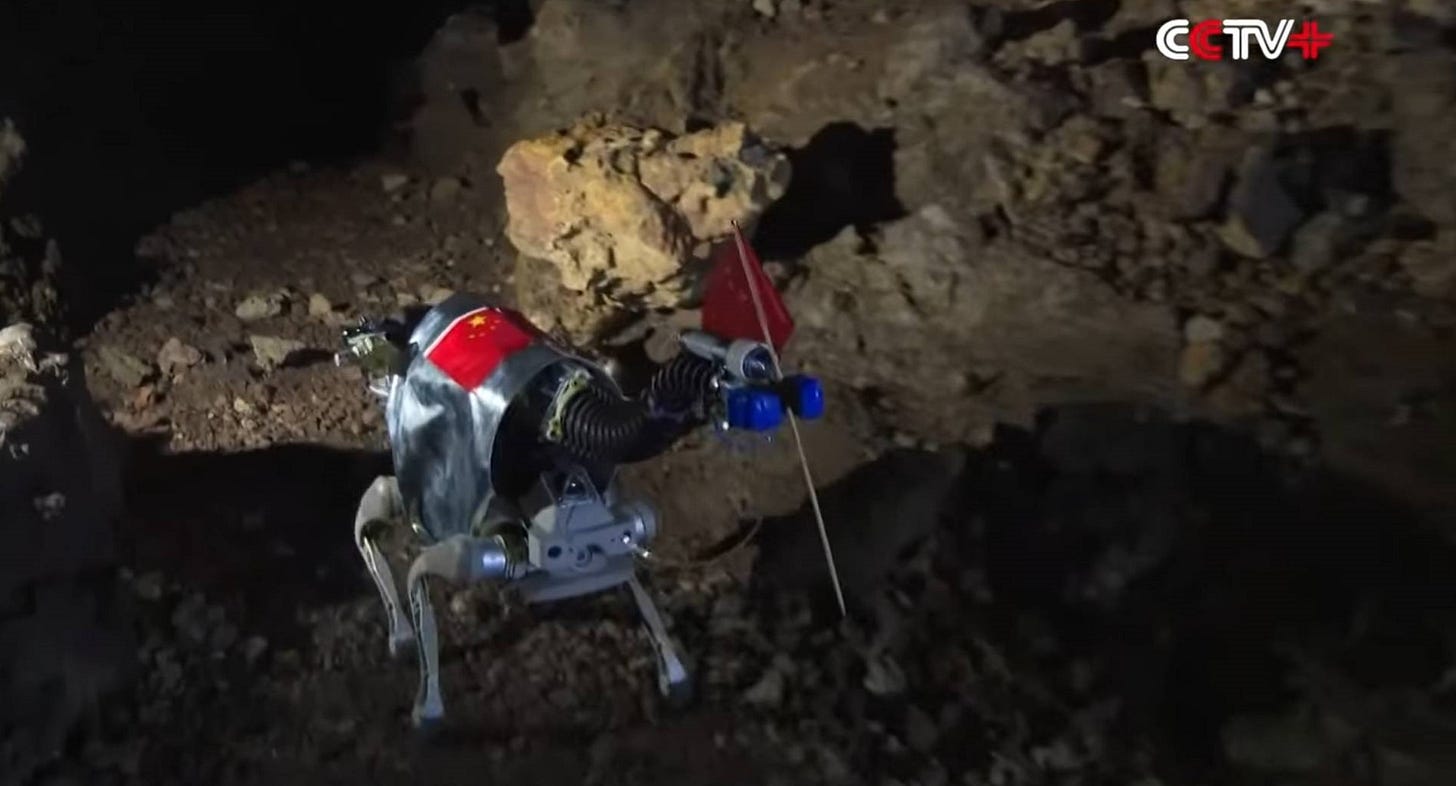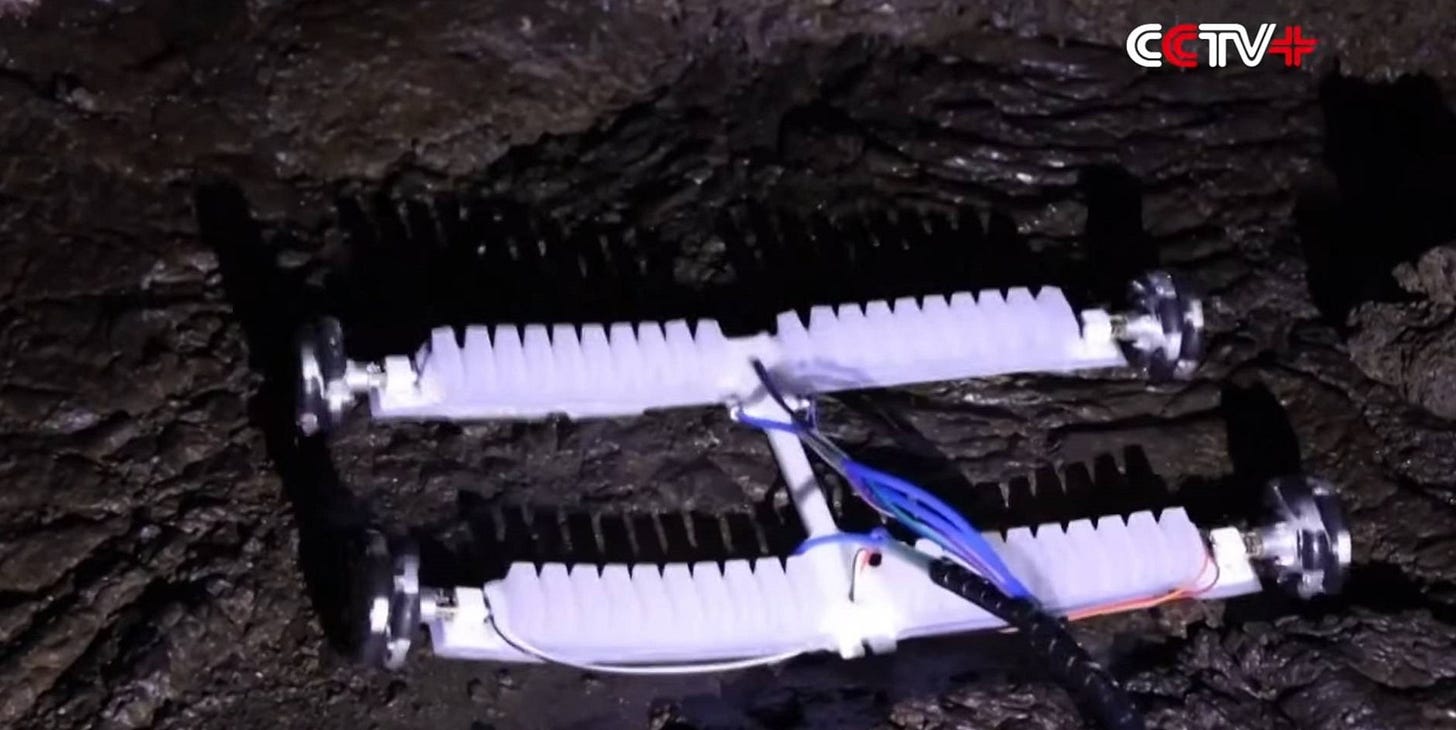International Space Association Launched, Tianzhou-8 Departs
Reusable rocket activity continues ahead of debut launches.
To start the second half of the year, China has started a new space cooperation group, tested lunar lava tube robots and making Moon bricks, while preparing the Tiangong Space Station for its next resupply mission, as its previous crew prepares for future assignments. Meanwhile, LandSpace is preparing landing pads, iSpace has new engine test stands, and OrienSpace has tested a complete engine.
IDSEA launched!
China launched the International Deep Space Exploration Association, abbreviated as IDSEA, on July 7th. The initiators of the association are China’s Deep Space Exploration Laboratory, the Lunar Exploration and Space Program Center of the China National Space Administration, the Chinese Society of Astronautics, the Chinese Society of Space Researc,h and the French initiative "Planetary Exploration, Horizon 2061”, along with support of twenty academicians from China and thirty-one international scientists.
According to the Global Times, over one hundred representatives attended the event, including officials from the China National Space Administration, the Chinese Ministry of Civil Affairs, the People's Government of Anhui Province, the China Association for Science and Technology, diplomatic missions in China, scientists, and representatives from relevant organizations. Sixteen international organizations, including the United Nations Office for Outer Space Affairs and the International Astronautical Federation, along with over seventy government departments, space agencies, research institutions, and universities worldwide, were reported to have sent congratulatory letters upon the launch of IDSEA.

At the launch of IDSEA, Wu Weiren (吴伟仁), Chief Designer of China's Lunar Exploration Program, was elected as the association's first chairman, according to Xinhua, along with the first board of directors and the association’s charter. Speaking at the launch, Wu said that the association holds great significance for international exchange and cooperation in China's space program and is a key step for collaborative innovation in the global space community. He also told CGTN that within a decade, IDSEA will look to attract five hundred international research members and one hundred thousand individual scientist members.
CGTN also spoke to Ahmet Hamdi Takan, founding member of IDSEA and an expert in Türkiye’s Deep Space Science and Technology, who said:
“With this association, we will be able to reach all the international partners and scientists in one platform, so they will be aware of the ongoing and future missions”
Simone Dell'Agnello, a researcher at Italy's National Institute for Nuclear Physics and a founding member of the IDSEA, told CGTN as well:
“Many countries are specialized in one thing... So it makes a lot of sense for everyone to collaborate with the rest of the world”
The current focuses of IDSEA, according to Wu, will be lunar exploration, interplanetary missions, and asteroid defense, while studying global trends in deep space exploration to define scientific directions and technological roadmaps for further exploration, alongside hosting international academic events. There will also be efforts to promote the application of deep space science and technology for economic and social development.
As previously reported, the IDSEA will build upon China’s existing space cooperation efforts and improve opportunities for personnel training and technology transfer for Global South countries wanting to research and explore space. IDSEA will likely be attractive to African, Latin American, and Southeast Asian nations looking to establish their own space programs.
Tianzhou-8 departs Tiangong

The China Manned Space Agency announced on July 8th that the Tianzhou-8 spacecraft undocked from the Tiangong Space Station at 15:09 pm China Standard Time (07:09 am Universal Coordinated Time), switching to independent flight. Tianzhou-8 is expected to spend some time in low Earth orbit before being brought into the atmosphere, with the China Manned Space Agency stating:
“[Tianzhou-8] will re-enter the atmosphere in a controlled manner at an appropriate time in the near future. Most of the cargo spacecraft's devices will be ablated and destroyed during the re-entry process, and a small amount of debris will fall into the designated safe sea area.”
If there are any problems with this translation please reach out and correct me.
As of July 9th, the spacecraft has already re-entered Earth’s atmosphere. Re-entry took place at 06:42 am China Standard Time (22:42 Universal Coordinated Time, on July 8th).
The Tianzhou-8 cargo resupply mission launched to Tiangong in the late hours of November 15th in China, arriving at the Tianhe module’s aft docking port three hours after liftoff, where it has resided since. During its seven-month stay, the spacecraft has acted as additional storage for clothes, food, and other consumables for the Shenzhou-19 and Shenzhou-20 crews, and has been slowly filling with trash for disposal in the last few weeks docked.
At present, the next cargo resupply mission headed for Tiangong is Tianzhou-9. Tianzhou-9 is currently planned to launch this month, no earlier than July 14th.
LandSpace selects rocket landing pads
According to physical documents handed out, LandSpace has selected Minqin County (民勤县), in Gansu province (甘肃), as a landing site for Zhuque-3 first-stage booster flying from the Jiuquan Satellite Launch Center. The landing pads are set to be located around 300 kilometers southwest of the launch site, with construction planned to conclude in August before Zhuque-3’s debut flight.
The Minqin County landing site is planned to include landing pads, gas and power supply systems for safing the first-stage, communication systems, as well as lighting and fire protection systems. Compared to sea-based recovery ships, landing pads built downrange from the launch site will be cheaper to operate and maintain.
LandSpace plans to debut Zhuque-3 in the coming months (Quarter 3 2025, July, August, September), with up to three launches planned this year. Those launches may include a successful landing of the first-stage booster.
Shenzhou-19 crew meets the press
The Shenzhou-19 trio returned to Earth on April 30th after a six-month stay onboard the Tiangong Space Station. On July 9th, Cai Xuzhe (蔡旭哲), Wang Haoze (王浩泽), and Song Lingdong (宋令东) met the press for their first public appearance since returning to Earth.
Since returning to Earth, the three taikonauts have had their physical and mental health monitored as their bodies readjust to the planet. Officials stated, via the Global Times, that the crew’s muscle strength, endurance, and cardiopulmonary functions have returned to preflight levels, and after passing health and well-being assessments in the coming weeks, they will re-enter potential selection for future missions and normal life.
Cosmoleap CEO on reusable rockets
Recently, Cosmoleap Chief Executive Officer Chen Shuguang (陈曙光) was interviewed by the Pujiang Science and Technology Review (浦江科技评论), published by the Shanghai Science and Technology Innovation Finance Research Institute (上海科创金融研究院), where he discussed why his company has chosen the catch tower route for recovering the first-stages of rockets.
Cosmoleap is currently developing its two-stage partially reusable Leap-1 (跃迁一号) launch vehicle, powered by the liquid methane and liquid oxygen burning YF-209 engine. For first-stage recovery, boosters will be caught by a catch tower.
To begin, why choose catch towers? Chen explains Cosmoleap’s reasoning as:
“Taking tower recovery as an example, China's steel structure and platform manufacturing are at the top level in the world. Not only is the quality excellent, but the cost is also low, which provides strong support for the development of tower recovery technology.”
Further reasoning for ditching landing legs was explained as allowing for an increase in payload capacity by 3,000 to 5,000 kilograms, along with allowing for improved reliability of landing systems, as a booster’s speed does not need to be zero for recovery. Costs were also briefly mentioned as another reason, as the rocket can focus on being a rocket, and the catch tower can focus on recovery.
Regarding targeting an aggressive launch timeline, with a debut flight next year (a delay back to the original target year), with limited funding, Chen Shuguang explained:
“[The] most important engine for rockets, there are already many relatively mature engine suppliers in the industry. Their technical level and supply capacity can fully meet the demand. There are also rocket fuel tanks, which are difficult to manufacture, and now there are high-quality manufacturers willing to cooperate in supplying them. Not only are their technologies reliable, but they have also reduced costs to less than one-third of the original through large-scale production. With such a complete supply chain system, we can quickly build a good rocket.”
If there are any problems with these translations please reach out and correct me.
Through buying pre-developed hardware and reusing first-stage boosters, Chen believes Cosmoleap can have the costs of reflying a booster down to under one million Yuan (around 140,000 United States Dollars, as of July 8th) in the future. These choices, he believes, will help the company capture a large customer base for affordable and reliable launches faster than it took SpaceX with Falcon 9.
Speaking on progress since the company’s public emergence twelve months ago, it was said that the first batch of engines has been tested for thousands of seconds already, demonstrating multiple ignitions along with working with the flight computers, while the catch tower is being tested with weights similar in size to a rockets first-stage to asses load limits as well as the speed and accuracy of it.
At the moment, Chen Shuguang expects Cosmoleap to be profitable by the end of 2027 through high-frequency launches for various government and commercial customers.
iSpace opens new test stands
On July 1st, iSpace took ownership of two new engine tests located in Mianyang (绵阳市), Sichuan province (四川). Each of the test stands is said to support engines with a thrust of around 100 tons. Engines tested at the facility are set to be iSpace’s liquid methane and liquid oxygen burning JD-2 engine, planned to be used on the partially reusable Hyperbola-3 launch vehicle.
Located near the test stands is iSpace’s intelligent manufacturing facility, possibly for quickly iterating engine configurations and swapping components between tests.
At the moment, iSpace is targeting December for the debut flight of Hyperbola-3 along with a booster landing on a drone ship, followed by a possible reflight of a booster in June 2026. Three Hyperbola-3 launch vehicles are believed to be in various stages of production.
Lunar lava tube robot tested
China Central Television shared a post on Facebook on June 29th, reporting that a team of researchers has tested specialized robots to explore lunar lava tube caves. The newest series of tests had two different robot designs explore a cave, similar to lava tubes on the Moon, near Jingbo Lake (镜泊湖) in Mudanjiang City (牡丹江市) in China’s northeast Heilongjiang province (黑龙江).
During the tests, the robots engaged in autonomous exploration and multi-functional operations to navigate through the cave. Both robots also carried seismometers that could be used on the Moon in the future.
Compared with traditional rover designs, the two robots reportedly have improved environmental adaptability and flexibility and have better operational capabilities, perception, and decision-making.
Researchers prototype lunar 3D printing
Researchers at the Deep Space Exploration Laboratory have prototyped a lunar regolith 3D printer that eliminates the need for Earth-sourced construction materials, Xinhua reports.
According to researchers, their system uses a high-precision reflective concentrator and flexible fiber-optic energy transmission to achieve temperatures hot enough to fuse lunar regolith. Through their prototype system, researchers were able to print lunar bricks as well as custom molds of complex structures.
In future applications, the researchers could manufacture structures made of lunar regolith with their prototype. A more complex, refined version of the system could enable the construction of unar roads, equipment platforms, and buildings for the International Lunar Research Station in the 2030s.
OrienSpace fires up YF-102 engine
OrienSpace shared on July 8th that it had completed an engine firing test, although they did not specify what engine was being tested. The engine would later be identified as the Academy of Aerospace Liquid Propulsion Technology’s (航天推进技术研究院) rocket-grade kerosene and liquid oxygen burning YF-102.
With the test firing, the company believes that its two-stage partially reusable Gravity-2 launch vehicle has entered a new phase of testing where individual systems are brought together for comprehensive testing. Those tests will then progress to a static fire and then a first flight.
Before testing a YF-102, OrienSpace had been working on its own engine, using the same propellants. First, the YuanLi-85, capable of generating 85 tons of thrust, then the YuanLi-110, which would generate 110 tons of thrust. A YuanLi-85 underwent a gas-generator test in December 2023, while a YuanLi-110 also performed a gas generator test in December 2024. Progress on Gravity-2 has been quiet overall too.
Despite this, OrienSpace still believes a debut flight of Gravity-2 is possible by the end of the year.
The YF-102 has been tested extensively for use for the Long March 12 and CAS Space’s Kinetica-2 rocket, recently culminating in a booster static fire, as a ‘ready-to-go’ option for space launch enterprises building launch vehicles. It has also supported the only launch of Space Pioneer’s Tianlong-2 in 2023.



